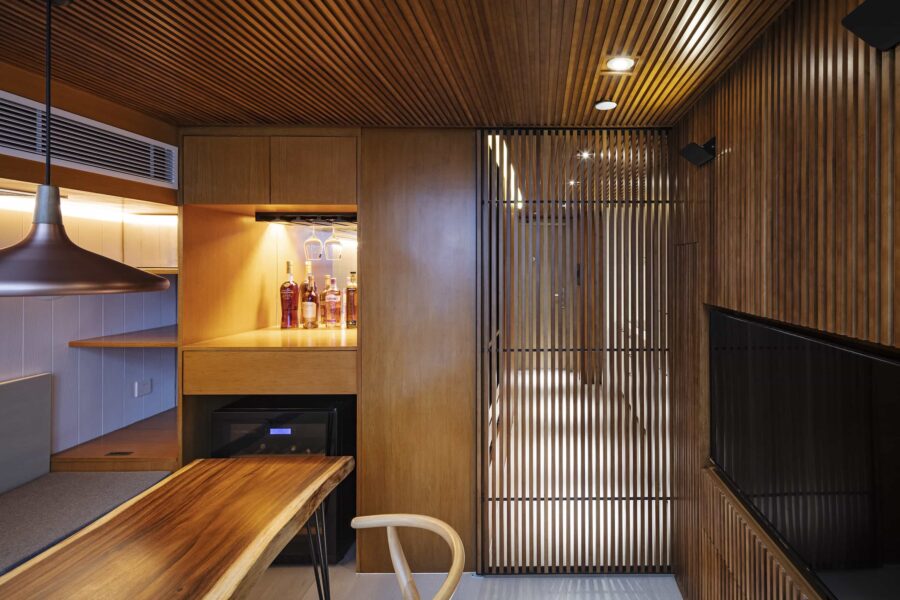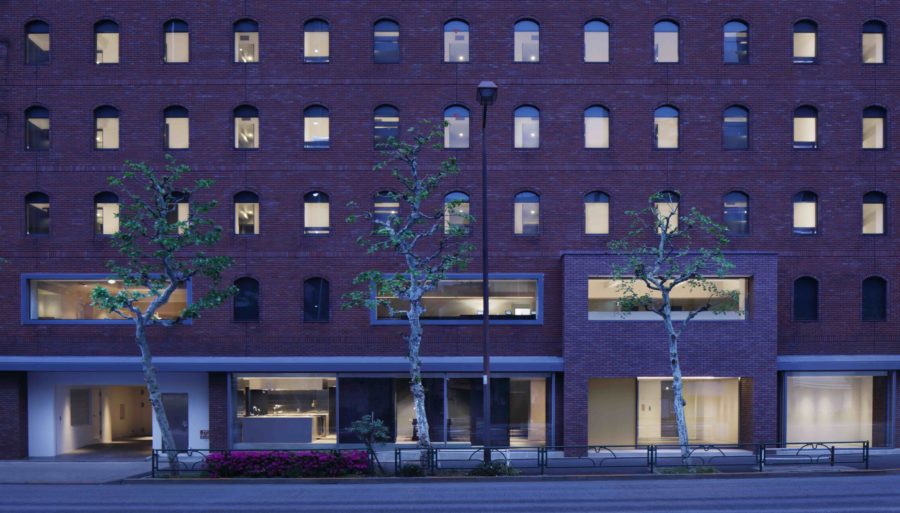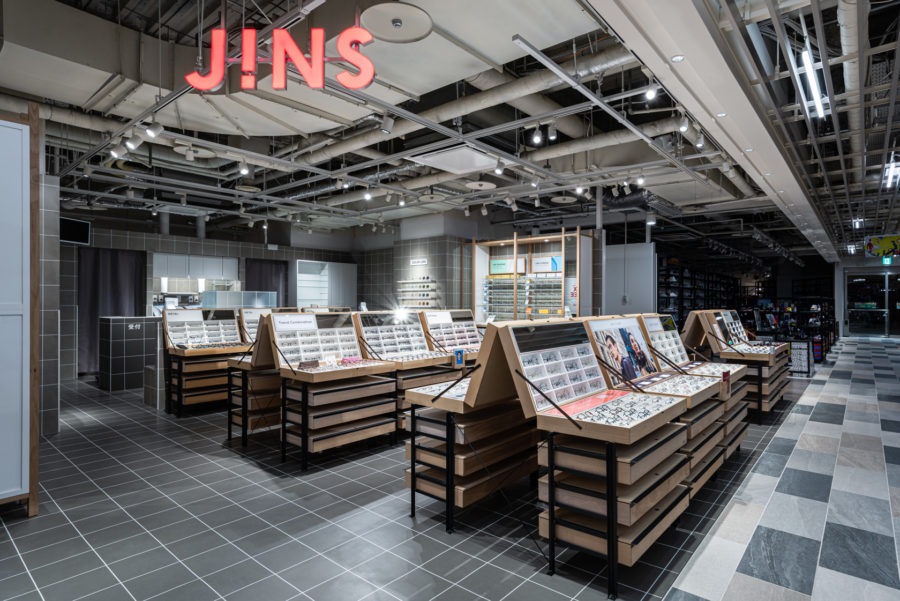東京郊外は北鎌倉の山の上に建てられた小住宅である。
この土地特有の六国見山への雄大な眺望と、頭上に延びる青空の広がり。ここにあるべき住宅には、豊かな環境を切り取る2つの窓をもたせた。それらは互いにまったく異なる形式ながら、それぞれがこの環境のある特長的な側面を増長させる装置である。
まずその1つ目は、矩形ワンルームの一辺に設けた6m超えの大きな水平窓である。六国見山の連なりを巨大な絵画のようにフレーミングし、この環境の雄大さをドラマティックに映し出す。この窓は屋外環境を室内から見渡す装置である。
そして2つ目は、寄棟屋根の中心に穿った天窓である。寄棟屋根の頂点は煙突のように立ち上げられているため、日射はその筒内でバウンドし、柔らかく濾過された光が室内に届く。その光は季節、天候、時間によって変容し、この環境の多様性を知らせてくれる。この窓は屋外環境を室内にもたらす装置である。
この「外部環境を眺める窓」と「外部環境をもたらす窓」という2つの窓の対比。それは、前者の属するワンルームの白い無柱空間と、後者の属する木で仕上げた軽い勾配屋根という、空間エレメント自体の対比によって、いっそうクリアになる。
この小住宅は、環境を切り取る2つの窓によって、その豊かな環境をドラマティックに映し出す器となる。(早坂直貴)
Two windows that enhance the rich environment and bring it indoors
This is a small house built in a mountainside in Kamakura area, located on the outskirts of Tokyo.
The site provides unique locality with the magnificent view of Mt. Rokkokuken and the blue sky extending high above. This house is supplied with two windows to cut out the rich surrounding environment. While each window has completely different form and style, they both function as the instruments to exaggerate particular aspect of the surrounding environment.
In order to realize this initial concept, two “windows” were introduced in the design of this house. They have completely different qualities and characteristics in their design concepts, while each window becomes to be an instrument to exaggerate and reveal distinctive aspects of the surrounding environment.
The first window is a horizontal one extending more than 6m in length, placed at one side of a room in rectangular shape. It frames the range of Mt. Rokkokuken into a single picture in enormous size, capturing the grandeur of the scenery in dramatic manner. This window is the instrument to view outside environment from inside of the house.
The second window is a skylight placed at the center point of the hipped roof. The crowning point of the hipped roof is elevated like a chimney, and daylight gets bounced inside of this tower form and gently filtered light is brought into the interior space. The condition of the incoming light changes according to the season, the weather, and the time of the day, notifying the variety of the surrounding environment. This window is the instrument to bring in the outside environment into the house.
The difference between these two windows—one is to “look out the outside environment” and the other to “bring in the outside environment”—is further exaggerated and becomes more obvious when comparing the spatial elements of the room each window is placed, while the former window is placed in a room in white color without any column, the latter one is placed on a gently sloped roof finished with timber material.
By using those two windows to cut out the surrounding environment, this small house becomes an instrument to reflect the conditions of rich surrounding environment in dramatic manner. (Naoki Hayasaka)
【北鎌倉のぼうし屋根の家】
所在地:神奈川県鎌倉市
用途:戸建住居
クライアント:Individual
竣工:2020年
設計:邸宅巣箱
担当:早坂直貴、斧田裕太
共同設計:ULTRA STUDIO
構造設計:OAK plus
施工:石和建設
撮影:長谷川健太
工事種別:新築
構造:木造
規模:地上2階
敷地面積:165.11m²
建築面積:54.15m²
延床面積:103.16m²
設計期間:2019.02-2019.07
施工期間:2019.07-2020.01
【A house with a hat-like roof in Kita-kamakura】
Location: Kamakura-shi, Kanagawa, Japan
Principal use: Residential
Client: Individual
Completion: 2020
Architects: Teitakusubako
Design team: Naoki Hayasaka, Yuta Onoda
Co-design: ULTRA STUDIO
Structure engineer: OAK plus
Constructor: SEKIWA
Photographs: Kenta Hasegawa
Construction type: New building
Main structure: Wood
Building scale: 2 stories
Site area: 165.11m²
Building area: 54.15m²
Total floor area: 103.16m²
Design term: 2019.02-2019.07
Construction term: 2019.07-2020.01








